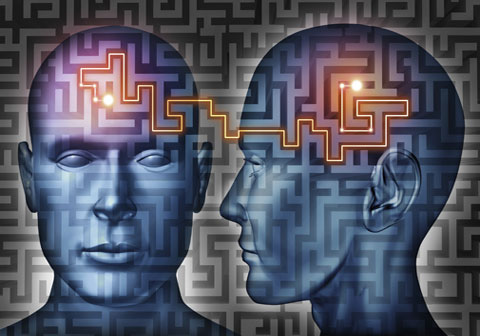Futurists often talk about the challenges, which the human race will face during the long journey towards the Space colonization. They predict that these challenges will force a new biological and psychological shift as a response of the extreme physical conditions in the Space. However, there is yet another evolution path for us to walk – virtual world colonization. The 3D Virtual worlds are getting more and more popular these days. They will eventually replace the Web 2.0 hype as a platform for social and business interactions. People will start to look on to the virtual worlds as a new residential place much alike the Americas in past or Space in the future. This journey has already started in long ago, since the presence of APRANET
Second Life is one of the major players in the virtual world scene. It has a number of unique features, however the most significant one is its community driven nature. Second Life is self organizing and changes in result of the community interactions. It is considered as place, where everything may happen.
There are anthropological studies over the psychological limitations developed in result of characteristics existing in our genotype and phenotype. We tend to develop specific psychological constructs, seen as a direct result from our biological characteristics. These psychological constructs then are manifested as behaviors. For the purpose of this speculation, I will talk about the biological characteristics as biological limitations. We may consider the behaviors influenced by these biological limitations as a rational. We just can’t do it another way!
L'anatomie, c'est le destin!
The phrase means "anatomy is a destiny" and is usually attributed to Freud. The original phrase belongs to Napoleon. We don’t jump from skyscrapers, because we can’t fly. We are afraid as the height goes up because of our flight limitations. We tend to approach a person closer to talk, because our voice is distance limited. We feel jealous, when our intimate partner is approached by another individual, because our reproductive path is treathen.We can’t live in water without equipment. However, there are behaviors, where the relation to specific biological properties is hard to be seen. Sometimes the direct relation is missing just because the biological limitation is already a history. For example adult people may demonstrate behaviors developed during the infancy (when there were biological limitations presented), although the biological limitation is not presented, anymore. Such behaviors may be considered as irrational.
It is quite challenging from a scientific point of view to develop a clear behavior classification based on the rationale-irrational axis in the real life. However, Second Life is still far more limited in terms of possible states. It is still described by a limited number of rules, which allows researchers to operate over them with more formal tools. This makes the rational-irrational behavior classification in Second Life much easier. The “limited number of states” characteristic renders Second Life as a useful scientific playground- the behavioral context is much simple and suitable for formal representations. However, these research possibilities raise a various ethic questions.
Just because, the very soul of Second Life is the human imagination, we may expect to see it expressed in a ways as much as the number of the residents. Residents build places from the past, from the future, from the tales, from movies and so on. Residents build objects, write scripts, perform live, attend to events or just socialize. It seems like there are tons of different expression forms in Second Life – no one is the same.
However, if one spends a little time to watch residents for specific behaviors, he will discover a strange phenomenon. This phenomenon is strange if one believes that human imagination is a true “infinity” synonym. Residents tend to demonstrate repeating irrational behavioral forms in similar situations. They are irrational in the Second Life context, because the underlying biological limitation is just missing in the virtual world. Following some examples:
• Line of Sight
Tons of public events (concerts, theaters, educational classes,presentation) are hosted every day in Second Life. It is not rare to see folks struggling to take a front place near the stage. In real life we’re doing this, because our effective sight and hearing distance is limited. This tendency is observable into individuals, who know that Second Life provides instruments to watch around the avatar to a far greater distance.
• Physical Space Distribution
Go to public places in Second Life and watch people talking. You will see a tendency people to distribute the virtual space based on their feelings and goals toward specific peers. People try to preserve the right distance, when talking with peers. People try to stand in front of the peer as it would be done in real life. People stand aside, when feel uncertain or socially incapable. Avatars may communicate in Second Life (technically) without using these common social techniques, but people use them, anyway.
In real life, we tend to distribute our physical space according to our psychological space. It may be observed easily in closed spaces like rooms. We stand closely to our intimate partners. We stand on a limited distance from unknown people and far from our enemies. We tend to keep a descent distance from formal peers during conversation. We take a place near the corner in unknown and unstructured situations. The distance and place are more likely to reflect our current emotional state, our fear and uncertainty, our goals. There are plenty of local social-cognitive theories, which try to explain the physical space distribution in result of specific psychological properties. We still demonstrate this type of behaviors in the virtual environment, although Second Life provides communication tools, which are distance-independent.
• 3D Space Distribution
This one may be considered as yet another Psychological Space Distribution phenomenon. In real life we live closer to the ground. We have skyscrapers and towers, but they are built on the ground. Going higher and higher, the discomfort levels starts raising. While in real life, we may localize specific biological limitations and corresponding psychological constructs, which make the sky inhabiting difficult, in Second Life it is slightly different. Second Life world is a true 3D (still virtual) space. Avatars may fly up to 170 m, alone. The maximum height, to which avatar may fly with the help of a vehicle is about 4000m (there are ways to push avatar up to million meters, actually). Buildings do not have to be built on the ground and may hang up in the air up to 650-700 m from the ground. In general Second Life residents may live high above the ground if they want. They may fully utilize the true 3D space in the virtual world – and it is still a dream in the real life in 21 century. There are a lot of buildings and platforms in Second Life built high above the ground. However the majority of the population inhabits the ground levels. I see it as a result of our specific psychological constructs formed in the physical world.
• Attribution
Attribution is a social psychology concept. It expresses the tendency people to attach stable traits to events and people. We always try to explain the world around us. We may think of attribution is another word for explanation. When something happens, we make attribution about it and then the attribution influences our behavior. There are various studies over the attribution phenomenon. People tend to attribute taller people as smarter, older people as wiser, men as better drivers, etc.
In real life the physical attractive individuals receive more sexual attention than individuals considered as non-attractive. One possible explanation (biologically inspired) for this tendency is the assumption that the physical attractiveness is an evidence for a biological health and eventually such individual will “produce” healthy off springs. We may think of it like a rational behavior in real life.
Residents in Second Life may choose their avatars shape. They may look sexy, ugly, scary or whatever they like. Although, there is no direct connection between the actual shape chosen and the individual psychological characteristics behind the avatar (it is not trivial to see it, at least), we tend to make attributions for the individual behind the avatar, based on its virtual appearance. We automatically attribute the attractive avatars as smart, funny, trustful, skillful on first sight, without actually knowing the real individual behind it. We start acting towards the target avatar according to the attributions we’ve made. It’s not hard to find posts in Second Life forums, which complains about the disappointments from in-world relations. I see them as a reflection of the human attributive capabilities, which are inadequate to the virtual reality characteristics.
From this perspective, being a human means to have irrational psychological limitations which prevent us from being as much effective as the virtual world allows. Being a human means to feel better, when talking eye-to-eye with your partner and be afraid from falling down.
The technology boost in areas like Full-Immersion Virtual Reality, Augmented Virtual Reality and Biotechnology will increase the potential and the challenges for us as virtual residents. Sensing and acting in virtual worlds will not differ sensing and acting in real life.
Evolutionary psychology claims that the behavioral traits development in the species is based on the same evolution principals as the evolution of the biological properties. It considers the environment as a central driving force behind the evolution process. The increased environment challenges in the virtual space due to the future massive technology advances will trigger human race to evolve new behavioral traits in order to adapt to the virtual space demands.
The intrinsic human psychological properties, which build the human identity, will be replaced. We will soon face the new human kind - virtual human, adapted to meet the virtual reality challenges.
Is the virtual human going to fail in real life trying to use its virtually evolved behaviors, then?

